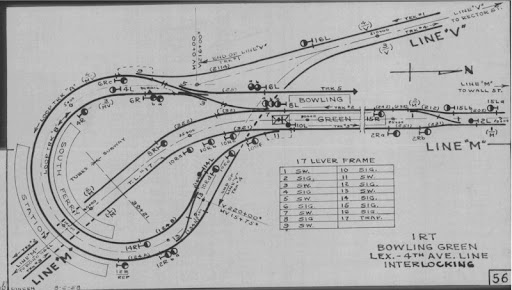by flexliner
aside from the old s ferry shuttle which used to pull in to the inner platform and then "wrong rail" back to the stub platform at bowling green have there been times when other trains (1,9, 5) pull into either side at S ferry and then reverse to rector st or bowling green rather than completing the loop?
are the tracks signalled for such operation, if it was ever needed?
are the tracks signalled for such operation, if it was ever needed?

